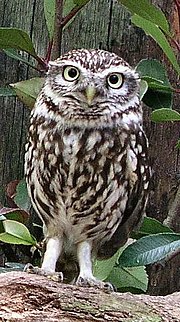brancoi (1969). Rudabánya is twinned with: Dobšiná, Slovakia (2011) Borsec, Romania (2012) Wikimedia Commons has media related to Rudabánya. Official website...
2 KB (65 words) - 16:17, 14 July 2024
palustris Fragmentary fossil remains from the Late Miocene (about 11 mya) of Rudabánya (NE Hungary) show some apomorphies typical of this genus. Given its rather...
10 KB (849 words) - 13:43, 20 July 2024
Helopsaltes. A fossil acrocoracoid from the Late Miocene (about 11 mya) of Rudabánya (NE Hungary) is quite similar to this bone in the present genus. Given...
7 KB (634 words) - 19:43, 24 September 2024
The specimens are known from the Edelény Formation near the town of Rudabánya, Hungary and date to the Vallesian age of the late Miocene. The generic...
3 KB (271 words) - 00:39, 5 November 2024
inhabited by humans. Late Miocene (about 11 mya) fossil remains from Rudabánya (NE Hungary) have been tentatively assigned to this genus. Considering...
8 KB (604 words) - 23:19, 8 September 2024
Rudabánya, at which the majority of Anapithecus fossils have been discovered, is located in north-eastern Hungary. During the late Miocene, Rudabánya...
8 KB (852 words) - 18:03, 6 November 2024
Balatonkenese (2,554) Sellye (2,548) Jánosháza (2,461) Gyöngyöspata (2,459) Rudabánya (2,458) Zamárdi (2,422) Kadarkút (2,418) Villány (2,406) Mágocs (2,316)...
28 KB (1,184 words) - 14:09, 14 October 2024
Miocene of China) †Anas sp. (mid-sized species from the Late Miocene of Rudabánya, Hungary) †Anas amotape (Campbell 1979) (Talara Tar Seeps Late Pleistocene...
23 KB (1,201 words) - 21:56, 9 September 2024
; Kaiser, T. M. (2007). "Paleoenvironment of Dryopithecus brancoi at Rudabánya, Hungary: evidence from dental meso- and micro-wear analyses of large...
24 KB (2,720 words) - 15:27, 30 October 2024
David (October 2017). "A new late Miocene ailuropodine (Giant Panda) from Rudabánya (North-central Hungary)". Geobios. 50 (5–6): 413–421. Bibcode:2017Geobi...
4 KB (332 words) - 10:34, 29 June 2024









